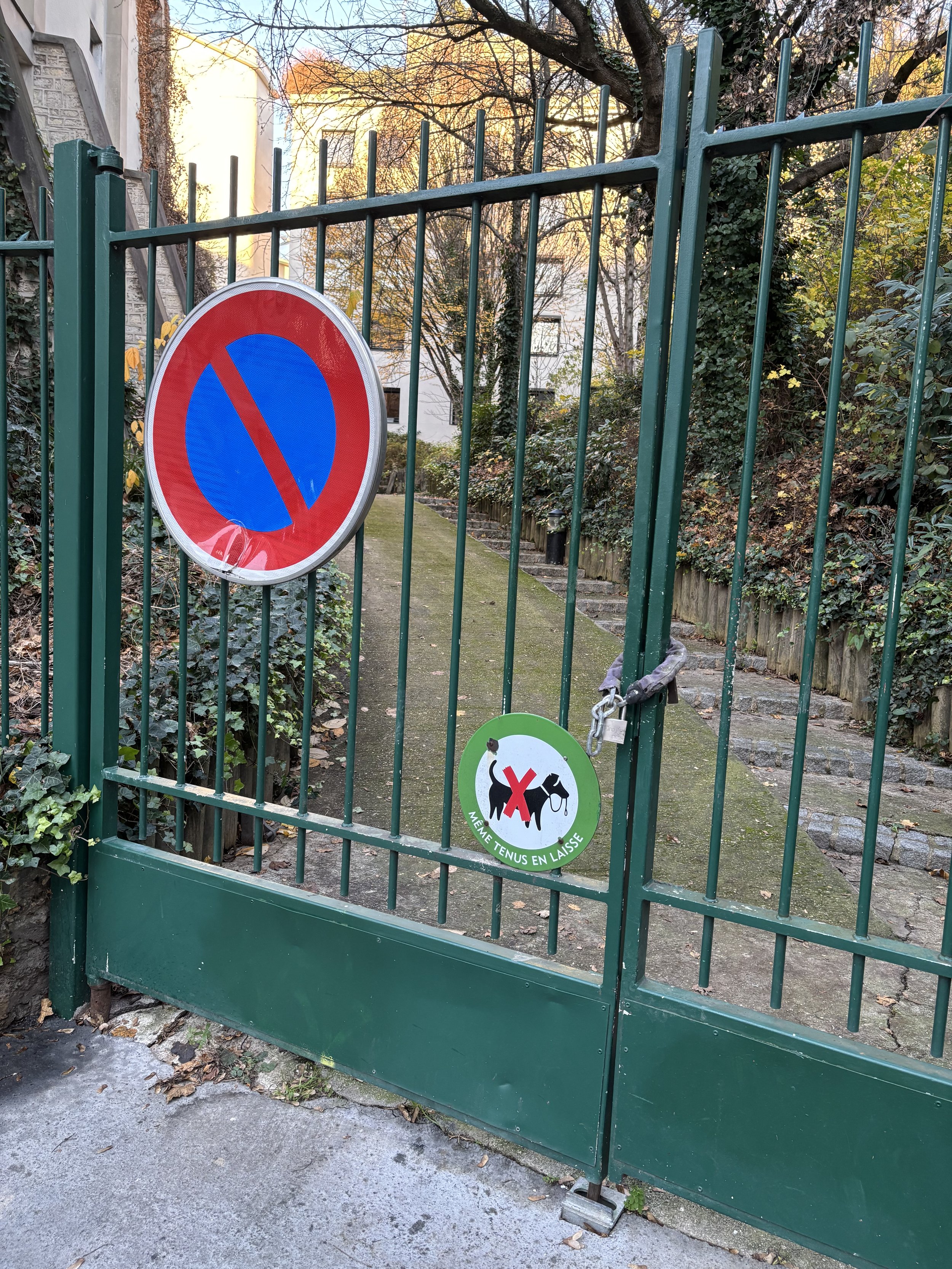The Parisian View | Paris
Parisian View from Point de Vue du Square des Chaufourniers
There was a time when this view was something truly special. You could come here, walk into the garden, sit on a bench, and soak it all in. Maybe bring a bottle of wine, sit among the flowers, and take in the beauty. The vineyards stretched both below and above you, the gardens were alive, and the view—oh, the view—was breathtaking. From here, you could see the Basilique du Sacré-Cœur de Montmartre.
The story goes that after France was thoroughly humbled in the Franco-Prussian War of 1870—Napoleon III captured, Paris defeated—Bishop Félix Fournier decided the problem wasn’t poor strategy or lack of resources. No, no, the problem was moral decay. France, he declared, had been in spiritual decline since the Revolution. So, naturally, he proposed building a giant church dedicated to the Sacred Heart of Jesus to restore the nation’s soul. Because when life gives you a military disaster, you build a basilica.
Basilique du Sacré-Cœur de Montmartre
Today, the basilica is the star of the skyline, framed by red chimneys jutting out from the city’s iconic blue-grey rooftops.
But now, things have changed. The entrance to the garden, Jardin Bergeyre, is locked. If you want to see the view, you have to try another route—climb 150 stairs to the top, Point de Vue du Square des Chaufourniers, only to find that the gate is locked there, too. At the top, you’ll find a bench thoughtfully placed for the perfect view. And by “perfect,” I mean you’ll be staring at a fence—a tall, wire fence that blocks the view. The fence is in the way. If you’re a photographer, forget it. The only way to get a clear shot is to stand on the bench and hope for the best.
Locked
I stood there, annoyed, when a young Parisian man, maybe in his mid-twenties, approached. He spoke a little English—more than I could speak French—and we struck up a conversation. He was smoking and offered me a cigarette. I declined. We ended up talking for a long time.
He told me he was from Lille, a city some two and a half hours northeast of Paris, close to the Belgian border. I had passed through Lille on the drive to Brussels. He had moved to Paris to find work, since, as he put it, there wasn’t much to do in Lille. Now, he shared a tiny apartment with immigrants. “I like my roommates,” he said, smiling, but his eyes carried the weight of someone trying to make sense of too much.
He said something that stuck with me: “What’s the point of this world if all we do is watch it pass by?” I asked him what he meant, and he gestured around us. “Look at this neighborhood,” he said. The area was stunning—elegant townhomes with tall windows, perfectly designed to take in the view without the fence blocking it. He told me, “You can’t afford to live here. No one can. It’s all for them.”
I asked him, “Who?”
“Those with money,” he said.
I asked where he lived. “Just a kilometer away,” he said, “but it’s completely different there.” He described the contrast—cramped apartments, overcrowded rooms, people struggling to make ends meet—just a stone’s throw from these sprawling homes with million-dollar views. He talked about how the gap between the rich and the poor keeps growing, how finding a decent job feels impossible, and how Paris, for all its romance, had started to feel like a cruel illusion.
“They have all this money,” he said, lighting another cigarette, “and we still can’t solve climate change. We still can’t solve poverty.”
He wasn’t angry—he was resigned, which somehow made it worse. We sat there by the bench—the bench with the view of the fence—and talked. And I listened.
Sunset over Jardin Bergeyre




